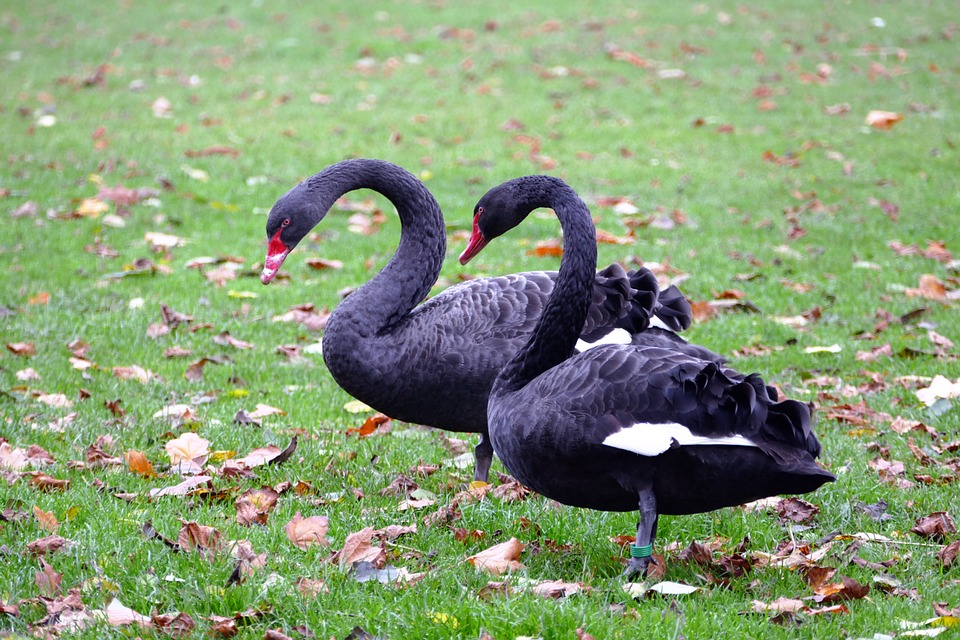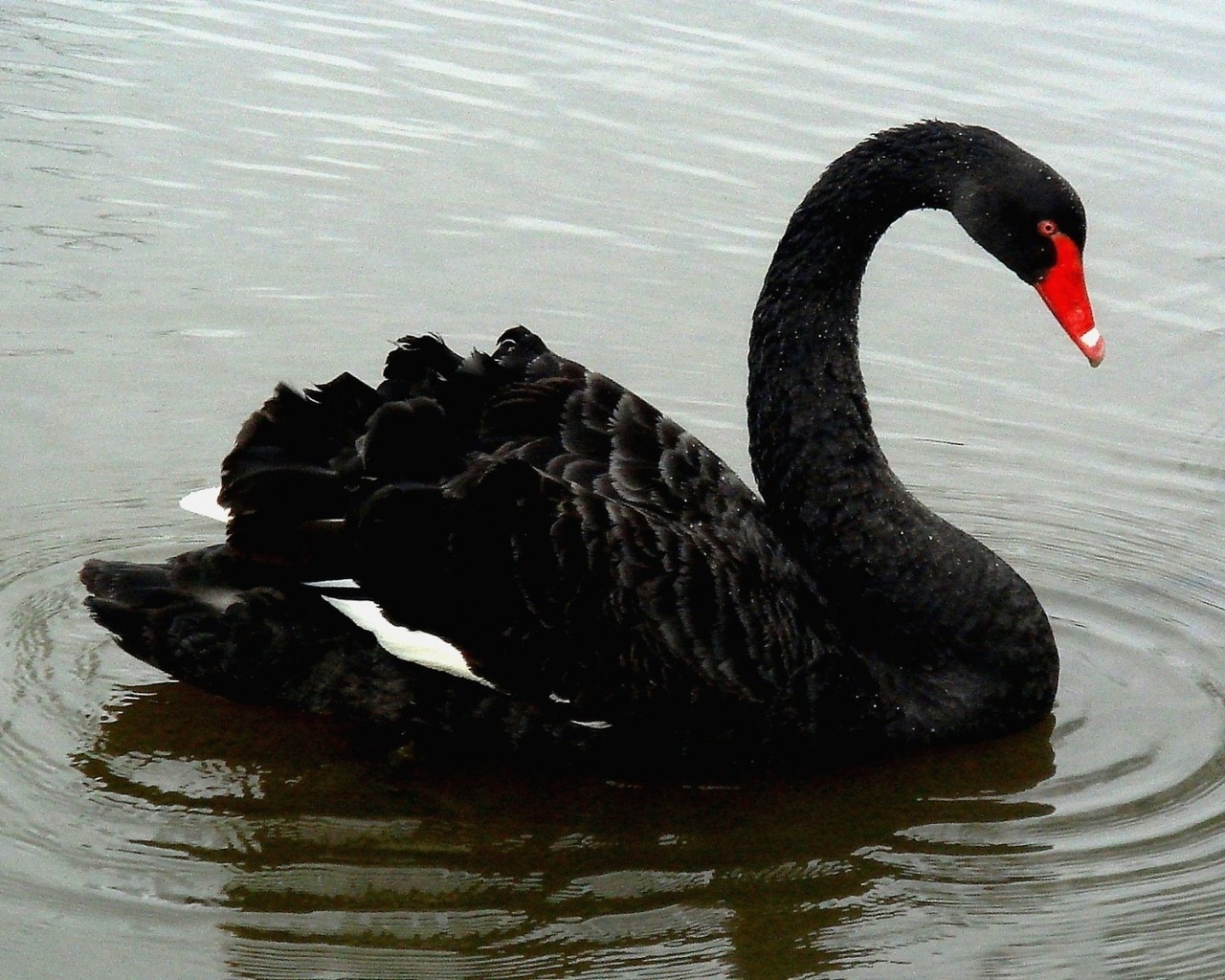I love how a nature moment can occur at any time – not necessarily when out in the forest with binoculars in hand. We were coming out of the Boathouse Cafe at Lake Daylesford after brunch when I noticed two swans very close together, right near the shoreline. The swans silently performed a beautiful series of synchronised movements – their necks bowing from side to side, arching over their partner’s body.
I commented that they looked frisky, and my friend visiting from London crept forward to take a photo. Frisky indeed they were, as one swan, presumably the female, floated low in the water while the male mounted her as he gripped the base of her neck with his bill. Mating lasted for just a moment. As they parted, they raised their necks and heads to the sky and honked loudly in unison. It was a beautiful moment; this is called the “Triumph display”!

A pair of swans – from Wikimedia Commons…
After separating the swans swam apart and rearranged their feathers a bit, acting very casual. My friend recorded the mating, and the lovely honking calls, and this can be viewed on my blog.
Male swans can be distinguished from females by being slightly larger – males 6-9 kilograms and females 4-7 kilograms. The male swan is called a cob due to the knob on his bill. This comes from the old German term “Knopf” meaning knob. The female is called the pen because of the way she holds her wings back in a penned manner from the old English term “Penne”. Although I think they both hold their wings in a similar manner!
Mating season for swans is anywhere from June to September, so this amorous pair got in early on May 28. The pairs mate for life, although, as in many so-called monogamous birds, extra-pair matings ( or sneaky affairs) are very common. In fact, studies at Albert Park Lake have revealed that 15 per cent of all cygnets are not sired by their social ‘father’, but by another cob in the population.
Black swans are the subject of intense study by researchers past and present at Melbourne University. One such researcher, Ken Kraaijaveld studied the social lives of the swans of Lake Wendouree very closely with the help of Ballarat Field Naturalists club members John Gregurke and Carol Hall.
Black Swans have very curly feathers on their backs, actually their wings, so when they are in the water, the back feathers look very curled. Both males and females have between 7 and 22 of these curly feathers. The curls develop throughout their youth, then remain fixed in number once they are sexually mature.

some free Black Swan wallpaper – showing the beautiful curled feathers
It turns out these curled feathers are actually a determinant of who mates with who, and the dominance of a pair in the flock. The swans with lots of curled feathers pair up togethe, and highly ornamented pairs select the best breeding areas for their cygnets. The cygnets raised by these “power couples” have the best chance of survival.
The study of the Lake Wendouree swans moved to Albert Park Lake when Lake Wendouree dried up in the big drought. You can read about the ongoing research of swans there at the website http://www.myswan.org.au/, and see a beautiful series of images of swans mating.
The pair at Lake Daylesford will probably have a nest ready to go nearby – one that was either built this season, or built upon from previous years. Once laid, the eggs will be incubated for about 40 days. If all goes well, we will be seeing four or five gorgeous fluffy grey cygnets at the lake in early July.
The biggest threats to breeding swans are foxes, which are rife around large lake systems and also very common locally. Another threat is both chasing and attack by off-lead dogs. Whether the dog actually “gets” the swan is not the point, as the chasing interrupts the swans’ feeding regimes, and stresses the birds out, raising their cortisol levels and lowering their resistance to disease.
More traditional predators include Australian Ravens, Native Water Rats and the bird of prey the Swamp Harrier. I have seen Native Water rats at the lake; they are lovely animals, however I do hope they stick to their usual diet of crustaceans and small fish!
An edited version of this was published in Hepburn Advocate 8/06/2015 xx
0 Comments
Trackbacks/Pingbacks